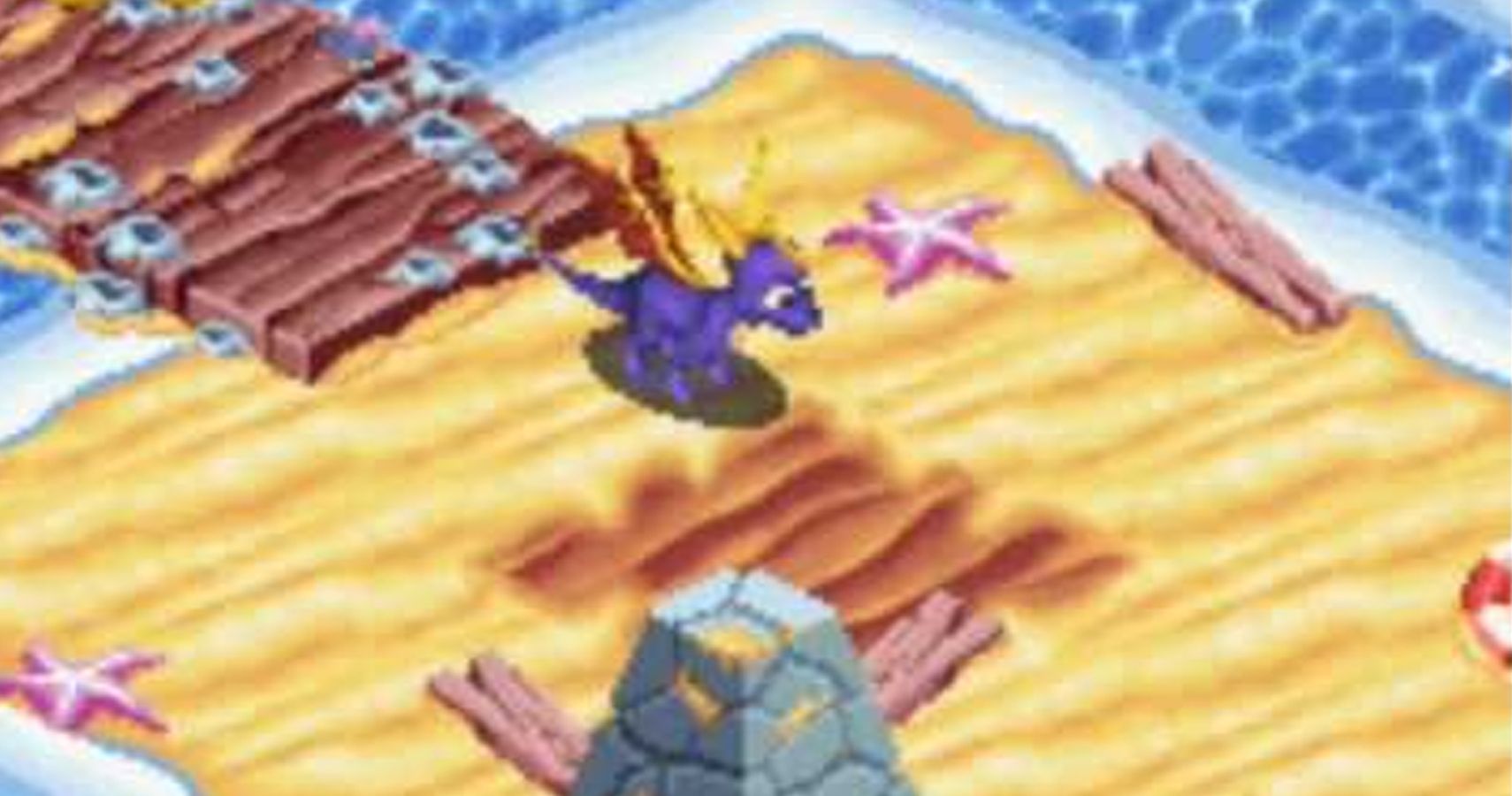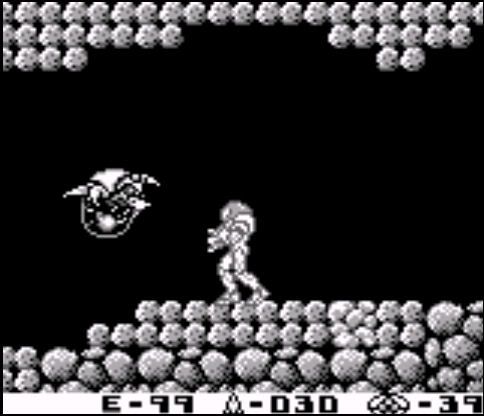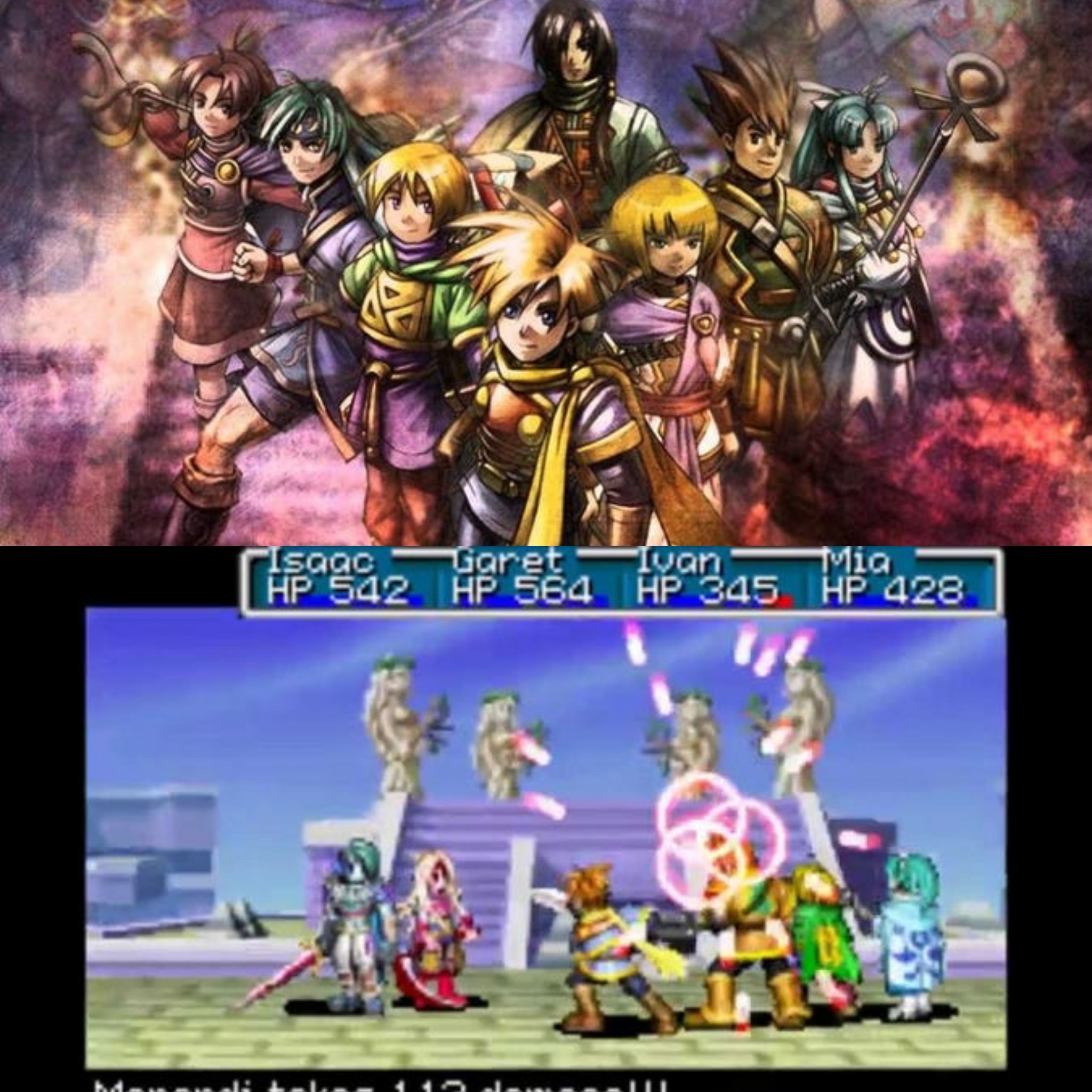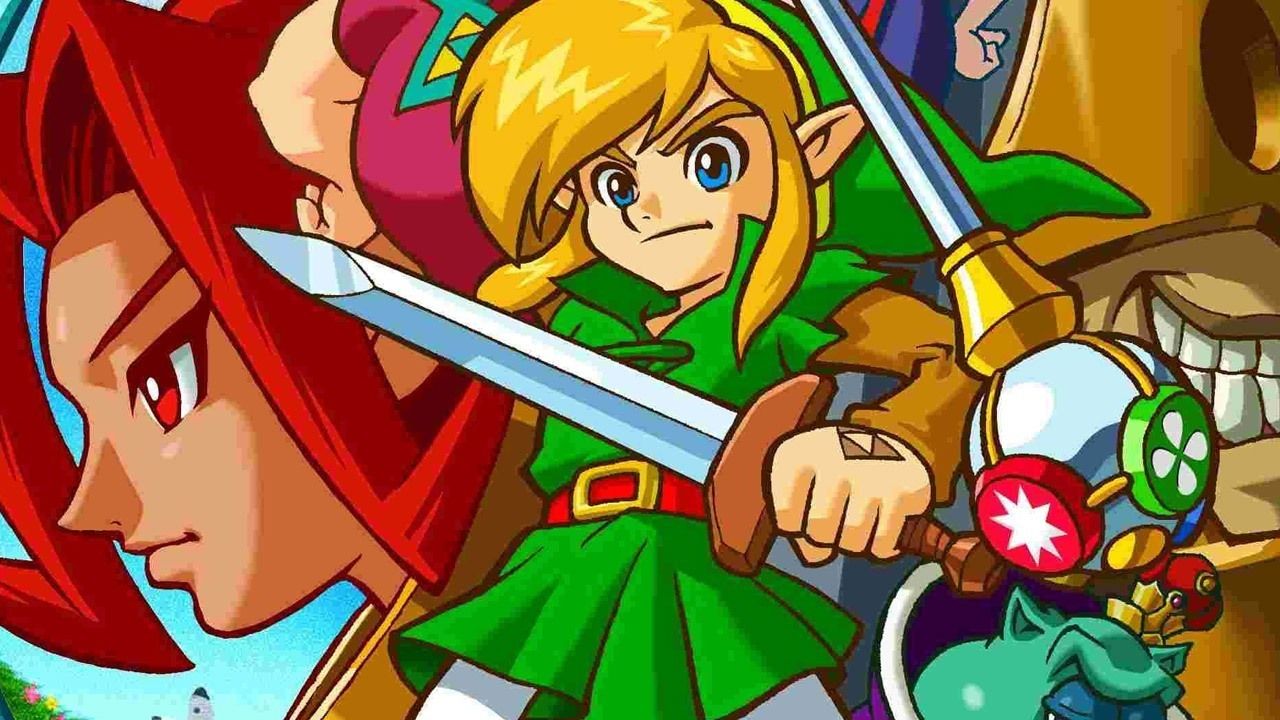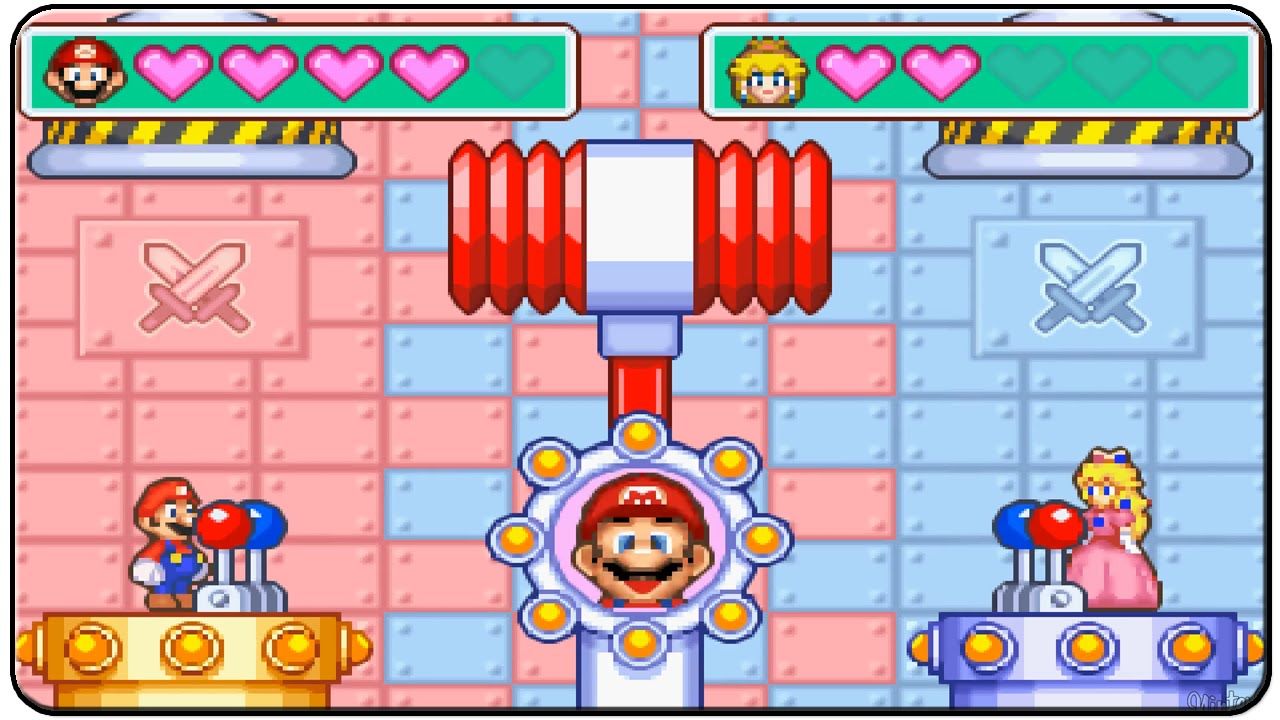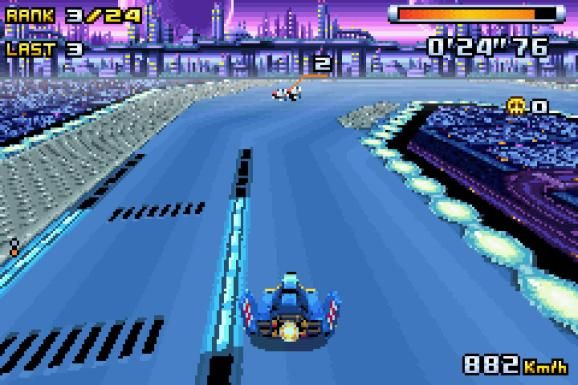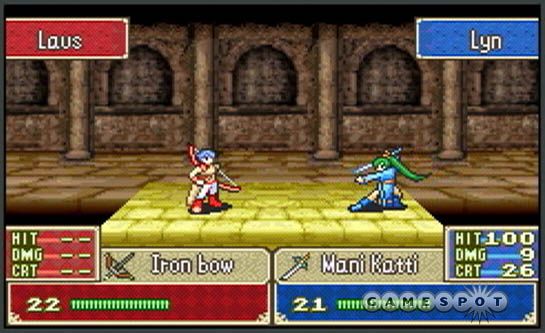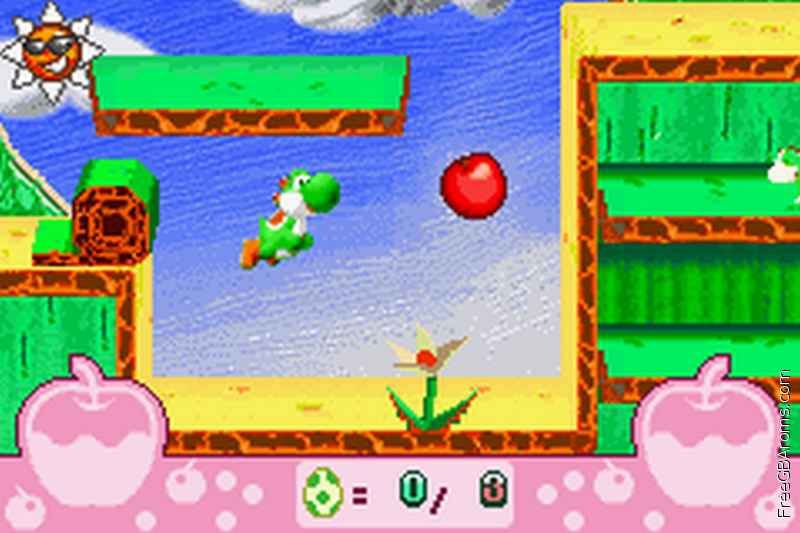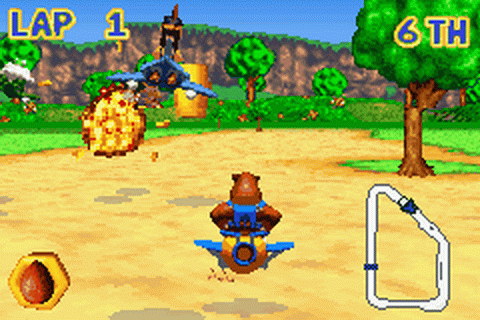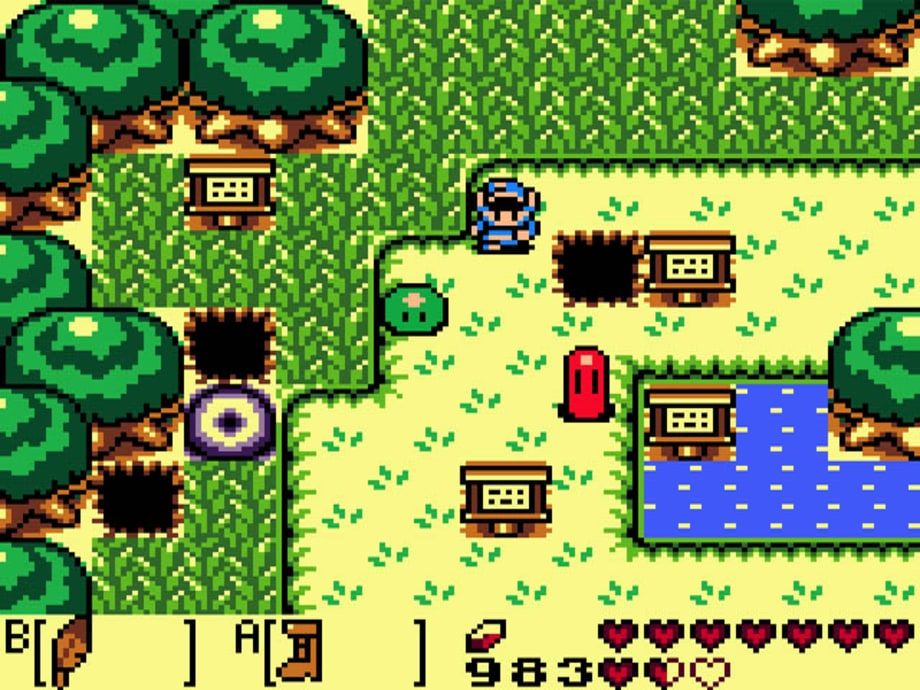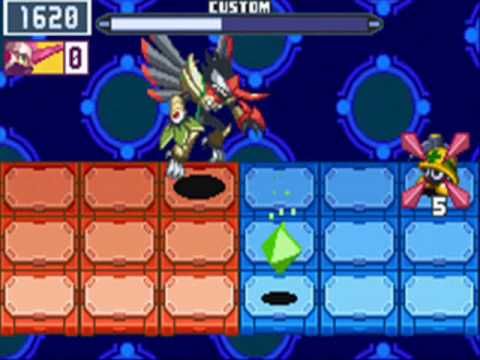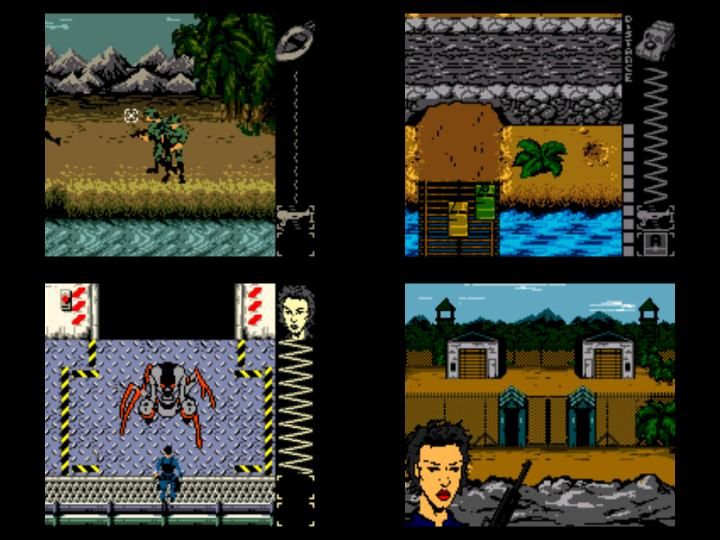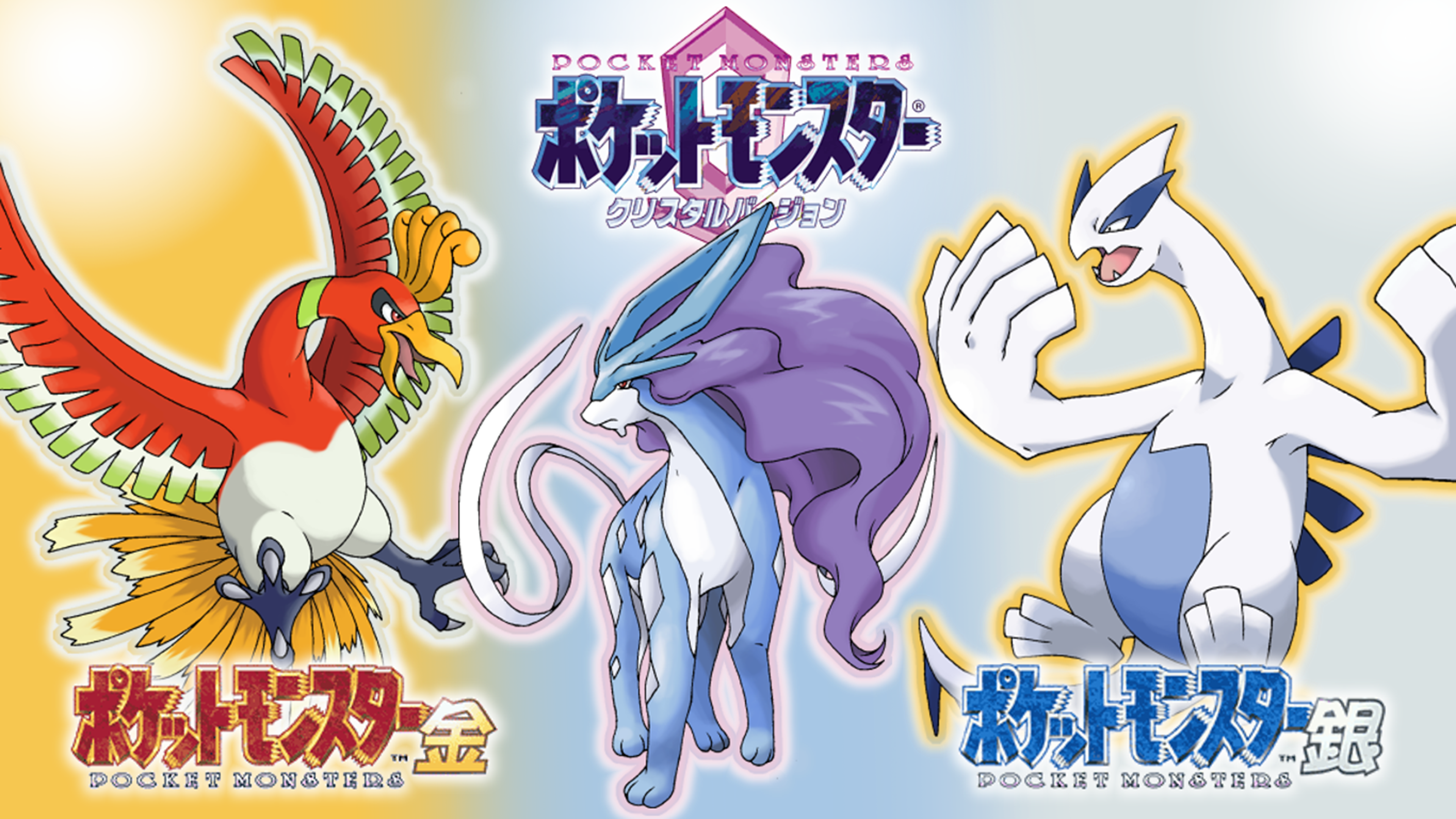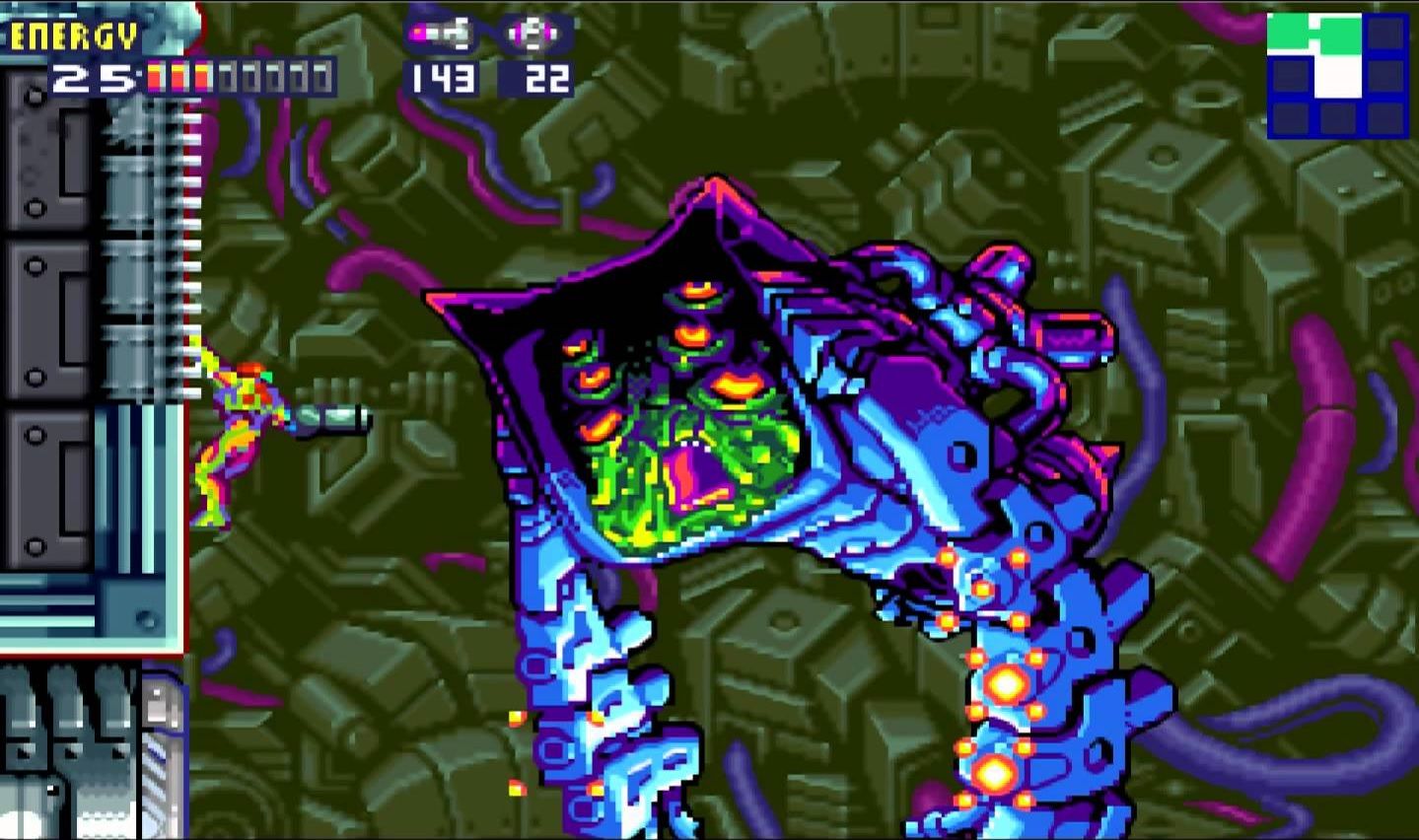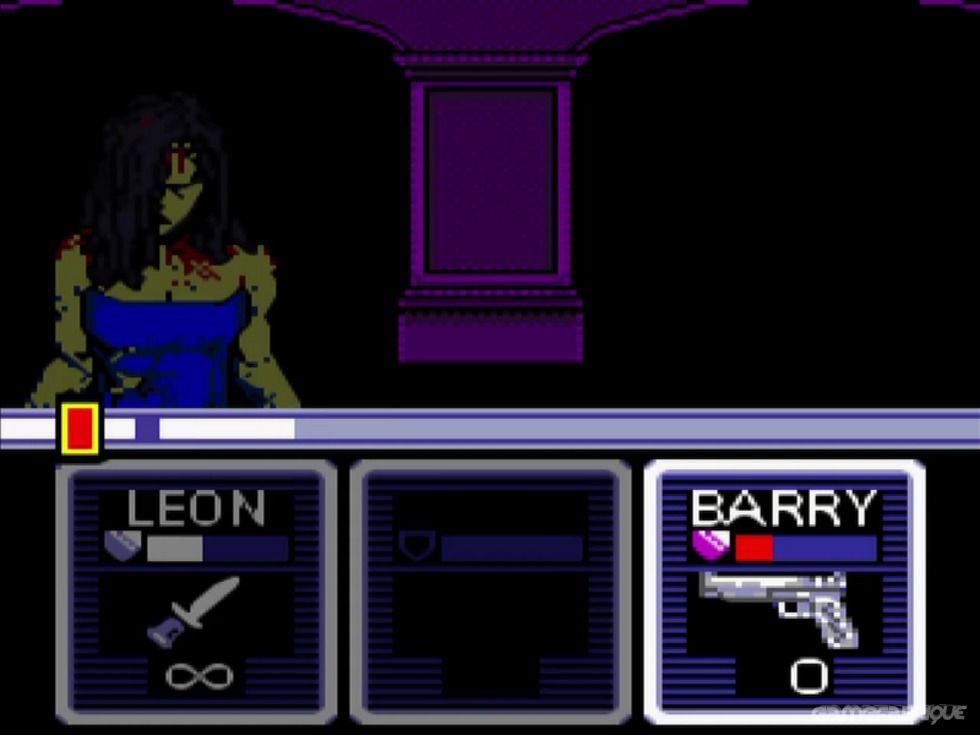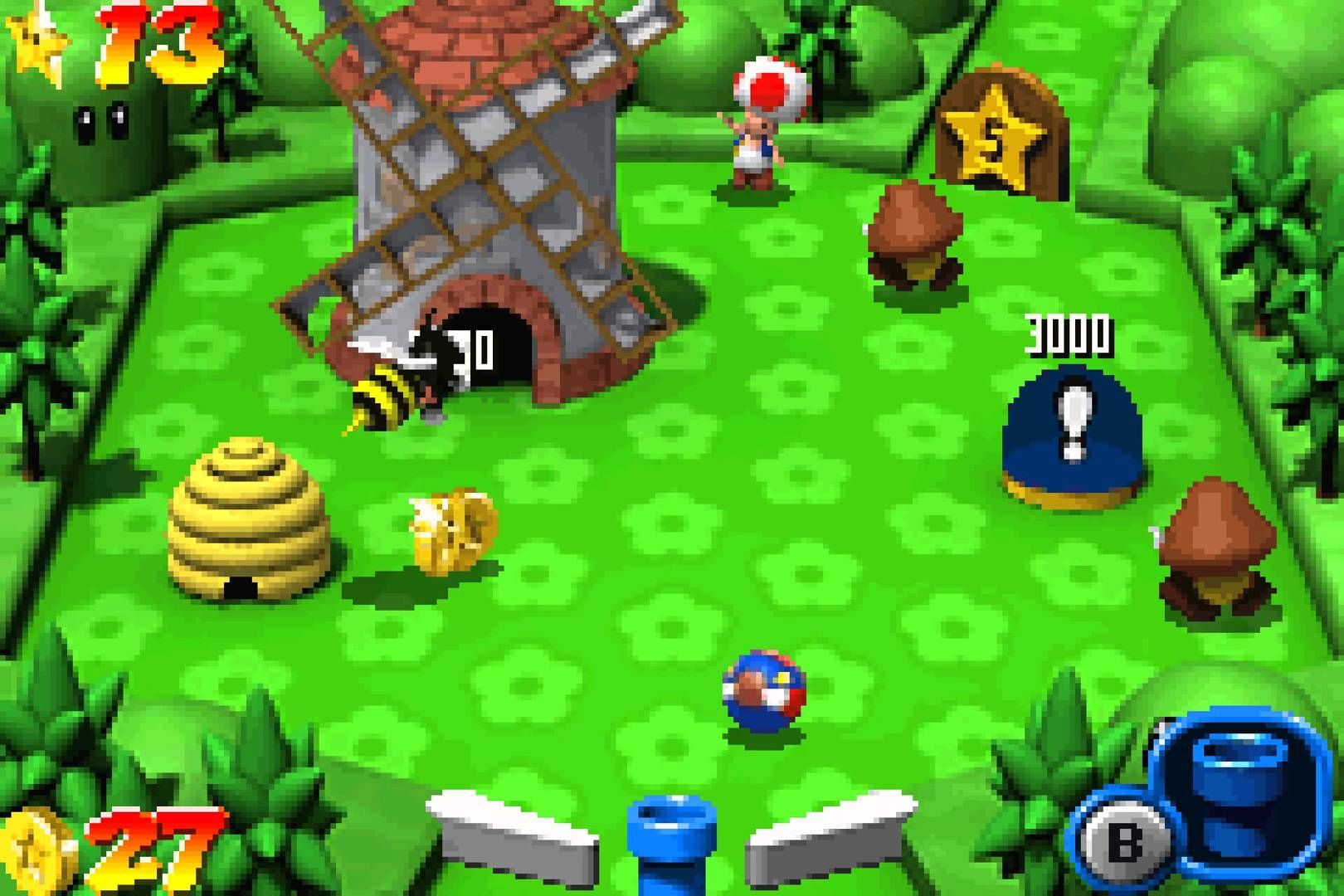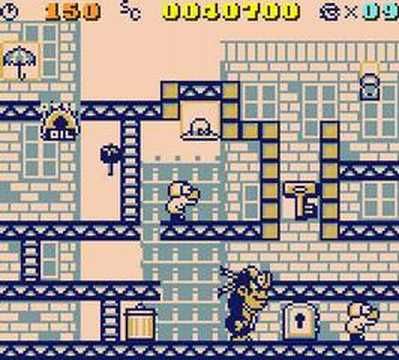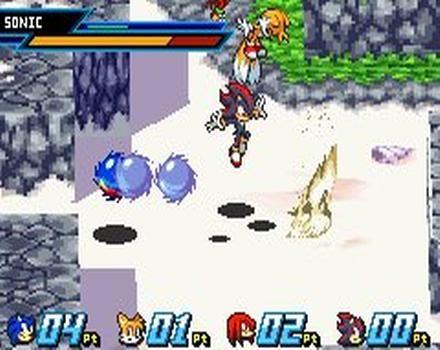When the Nintendo Game Boy released in 1989, it sparked a revolutionary innovation in video games, being able to play video games anywhere. It has created its own market within the video game industry that still continues to this day. The Game Boy was the most powerful brand in handheld gaming, having outsold competition like Sega’s Game Gear and Atari’s Lynx. The Game Boy would go on to have 2 other iterations, the Game Boy Color in 1998, and the Game Boy Advance in 2001. There would be plenty of games that would go on to be some of gaming’s greatest handheld games from series like Super Mario and The Legend of Zelda. The Game Boy would be notably home to many great RPGs, including the Pokémon series, the most popular handheld gaming series ever.
Despite the success, the Game Boy systems would be a notably simplified gaming experience; it was nowhere near the quality of each Game Boy’s corresponding home console such as Nintendo’s Super NES, N64, and GameCube, but it was so popular of a device, especially for children, that developers wanted to get their games on the Game Boy systems. As a result, many of the most popular names in video games would have entries on the Game Boy systems that just aren’t up to par quality-wise.
Here we will cover some of the lesser known or infamously known games on the Game Boy family of systems. Games that are either very bad, disappointing, didn’t age well, or were a dark era of that franchise’s history. These games left gamers craving for the superior console experience. But we will not be exclusively negative as we will also look into some of the greatest games that have been released on the Game Boy systems. So let’s look at the 20 worst and 10 best Game Boy games.
30 Worst: Metroid's Second Installment Falls Flat
It might sound a bit odd and shocking to see anything Metroid related in the worst category (unless you have played Federation Force), but Metroid II: Return of Samus, released on Game Boy in 1991, is one of the weakest entries in the series. It doesn't necessarily mean it is a bad game, but it doesn't give you the quality Metroid experience that even the NES classic had.
In Metroid II, the intergalactic bounty hunter Samus Aran is on a mission on planet SR388 where she is tasked to hunt down and exterminate the remaining Metroids. The game features a similar playing mechanic to the NES classic, but with very few new abilities. The only one that stands out as memorable is the Spider Ball. Additionally, your main task is to hunt down the Metroid creatures, you will know how many remain through the counter on the bottom right corner of the screen. It sounds like a simple task, but what makes this game very frustrating is that there is no map at all, so it is very easy to get lost in this very deep subterranean voyage. Fortunately, Metroid II was remade into a brand new game on Nintendo 3DS called Metroid Samus Returns, and it is a phenomenal game that is one of the best 2D games in the series.
29 Best: Nothing Compares To Golden Sun
The Game Boy Advance was best known for the quality of JRPGs that were developed for the system. From Pokémon to Fire Emblem, there were plenty of options for the JRPG enthusiast, but none were as good as the Golden Sun series from Camelot. The original game released in 2001 and the sequel, subtitled The Lost Age, released in 2003. The two games were actually supposed to be one but were split in two due to the size of the combined games. The story of the original follows Isaac and his party, but in The Lost Age, it shifts the focus to the perceived antagonist, Felix. The story might be the weakest part about Golden Sun, but it is still pretty solid with a unique perspective change with the two games.
Golden Sun featured characters known as Adepts who can use magic called Psynergy, they use this as part of their way of life. Psynergy is used both in battle and in dungeons to solve puzzles. The dungeons and puzzles in Golden Sun are better than even that of Legend of Zelda games.
I could go on all day about how amazing these two games are!
The Golden Sun games feature the best visuals ever seen on the Game Boy Advance, its so good that it looks better than some PlayStation games, and this is coming from a handheld series. Additionally, the music for dungeons and battles are incredibly epic, some of the best you'll hear in RPGs.
28 Worst: When Kirby Wasn't Pink
While Kirby has had plenty of consistently solid platformers throughout Nintendo handheld systems, Kirby's very first game is very lacking. Kirby's Dream Land released on the Game Boy in 1992. The most notable thing about this game is that Kirby did not have his copy ability at the time, nor was he colored pink. This lead to a rather overly simplistic gameplay that wasn't all that exciting, even for 1992 standards. All Kirby could do was suck enemies in, and either digest to no effect, or spit them back out like how it normally works throughout the series. Additionally, the game consists of only 5 levels, meaning you could complete the game within just one hour, two at the most.
The result is that the game could come off as good when you first play it, but after you beat it, there isn't much left to do in the game.
Its value was very low. That being said, the simplistic design of this game would undergo an evolution to the quality platformer series it is today. A lot of Kirby's growth is due to the work of Masahiro Sakurai and the late Satoru Iwata, without them the lovable pink hero may not exist today.
27 Best: Link Fights Through Ages And Seasons
The Legend of Zelda: Oracle of Seasons and Oracle of Ages is a special dual release game series in 2001 on Game Boy Color. Both of these games feature the top-down classic Zelda gameplay perspective. But unlike the likes of Pokémon Red and Blue, both Zelda games actually have their own separate story-line and design. In Oracle of Seasons, Link has to rescue Din from Onox, while in Oracle of Ages, Link has to recover Nayru from Veran. After finishing both games, you can then unlock the main story. This mini-series originally was going to be three separate games, but eventually, they had to shrink it to basically 2.5.
The series was a very successful one as both games sold 4 million copies each. This was deserving as many fans share the opinion that these were the best games on the Game Boy Color. Both of these games took advantage of the use of color more than any Game Boy game before them, thus being two of the most visually pleasing games to ever release on the system. Seasons notably took advantage of this as you can change the color design based on the seasons.
26 Worst: What Has Happened To Mario Party
Remember the days when Mario Party was actually a decent spinoff series in the Super Mario universe? It feels like those long multiplayer nights of the Nintendo 64 days are over. After the Nintendo 64 games, Mario Party as a series took quite a dip, featuring less interesting mini-games, rule changes to the board games that made it less exciting, and during the GameCube era, releasing a new Mario Party every single year made the series very stale. Among the many GameCube games was one that Nintendo decided to put on the Game Boy Advance, simply titled Mario Party Advance, and that game took the series to a new low.
Mario Party Advance focused more on a single player experience oddly enough. The mini-games ranged from extremely basic memory games or platforming games that were all done before. It lacked a whole lot of creativity that was seen in the earlier games. The single player didn't include the traditional coins and stars rules, it was more like, keep winning to keep playing. Single player games would often end in just a few turns if you either lose a mini-game or just had bad luck on the dice roll
25 Worst: The Last We Have Seen Of F-Zero
This worst entry is more about the unfortunate reality falling on one of the best racing franchises out there. F-Zero: GP Legend wasn't exactly a bad game. It featured intense races, a large selection of race machines to chose from, and looked visually pleasing. However, this game completely tanked in sales.
What is extra shameful about that is that Nintendo even had an animated series that debuted on regular TV around the time the game released in 2004.
They must have been hoping to boost the series popularity similar to what happened with the Kirby series in Kirby: Right Back At Ya. However, in North America, the animated series only lasted 15 episodes before being canceled. It would conclude its first and only season (51 episodes) in Japan, ending the series on a cliffhanger, but it wasn't even accepted well there. With the exception of the Japanese-only sequel F-Zero Climax on GBA, GP Legend would be the last entry in the series thus far.
There was a rumor that Nintendo approached the Need For Speed developers in hope to create a game on Wii U, but it never happened. All that has happened is cameo appearances in Nintendo Land, Mario Kart 8, and Super Smash Bros. Even to this day you will still see a good number of fans hoping for a brand new F-Zero every year, even a port of F-Zero: GX (one of, if not, the greatest racing game ever) would suffice.
24 Best: Fire Emblem's International Debut
Fire Emblem was a long-running strategy RPG series exclusive to Japan. It was developed by Intelligent Systems. It didn't take until the 7th game in the series to finally make it's debut internationally in 2003. The game was simply called Fire Emblem, although in Japan it also was subtitled "The Blazing Blade."
Fire Emblem featured a deep strategy RPG experience with tons of characters and different classes. While the main complaint about the game was that Lyn's story would basically be a huge tutorial, it can still be a very challenging experience. Players had to be very careful with their decisions because if an ally falls in battle, they are gone in that save file for good. It also featured fantastic music and a great storyline that is one of the best in the series. Fire Emblem: The Blazing Blade is actually a prequel to the previous entry that featured Roy, who was famous for appearing alongside Marth in Super Smash Bros: Melee before the series was localized. As of today, it has still yet to be officially localized in other regions. This was a major moment for not only the Game Boy Advance but for the series as well. Despite some dark times that nearly ended the series for good, Fire Emblem has emerged as one of Nintendo's top series in popularity.
23 Worst: The Yoshi Series Turns Topsy Turvy
Yoshi Topsy Turvy, also known as Yoshi Universal Gravitation outside of North America, is a unique game on Game Boy Advance where the game cartridge itself features a built-in gyro sensor. A large part of this game's gameplay revolves around tilting the Game Boy Advance system itself either left or right. Tilting the system results in the world being tilted as well. Certain platforms would come closer to you, or changing the gravity to allow a spherical object to roll to a certain point. What made this game so bad was that, despite the unique play style and similar look to the great Yoshi's Island, it didn't play anything like you would hope a Yoshi game would play like.
The motion control gimmick was just too strong here.
The tilting was a bit clunky, it wasn't a perfect one-to-one motion; Either extreme to the left or extreme to the right, making it difficult to maintain normal balance. It was a very short game with a very silly story. Of course, just about every Yoshi game has a story revolving around happiness, but it doesn't help when you have to bear with it while playing a poorly designed game.
22 Worst: The Last Banjo-Kazooie Game On A Nintendo System
In 2005, Rare would release what would be the last game from the famed Banjo-Kazooie series on a Nintendo system. That game was called Banjo-Pilot, a racing game similar to Diddy Kong Racing. This game was actually in development before Rare was bought out by Microsoft. It was originally going to be a sequel to Diddy Kong Racing as it is a racing game that features multiple vehicles. After Rare got bought out, they had to make drastic changes to the game since they were not allowed to use a Nintendo I.P. As a result, instead of using characters from the Donkey Kong franchise, Rare used characters from their own Banjo-Kazooie series, making this the last time we would see the series in any form on a Nintendo system.
The gameplay may be good as you start playing, but it lacks the longevity to keep it good. The A.I. are rather weak and easy in this game, you wouldn't expect much of a challenge here. The track design was also a bit overly simplistic and uninteresting. It is a shame that the bear and bird's last go on a Nintendo system was a simple spinoff that came out years after their great platforming games on the N64, Banjo-Pilot just simply wasn't worth the wait.
21 Best: Link Awakens The Gameboy's True Potential
The Legend Of Zelda: Link's Awakening was an action adventure game that was developed for the Game Boy in 1993. They would then optimize the game for the Game Boy Color in 1998. This Zelda game is a bit unusual compared to other games in the series. For one, it doesn't take place in Hyrule. There is no Princess Zelda or mentioning of the Triforce. It feels like a completely different game, but you're playing as Link. There are even enemies from the Super Mario series who make an appearance.
This game features an overhead play-style known from the classic Legend of Zelda. In addition to that, there are even some 2D sidescrolling segments that are in caves and dungeons that was a nice little change to the normal Zelda gameplay. While this game does have the standard dungeons and usable items in each level, there are also side quests such as secret seashells quest that offer a bit of extra value to the game's length. The game also had a fantastic musical score for a Game Boy game and even uses music as a focal point of the game's story. Link's Awakening does a lot to separate itself from other games in the series and is one of the biggest highlights of the original Game Boy system.
20 Worst: Twisting The Original Mega Man Formula
When you keep on going over and over with a certain series within a short span of time, it will eventually get to a point where it gets very repetitive and boring. The Mega Man Battle Network series originally came as a unique spinoff of sorts for the Mega Man series, being a real-time tactical role-playing game as opposed to the traditional 2D action game that made the Blue Bomber famous. The series started in 2001 on Game Boy Advance, and then had a new game every single year until Mega Man Battle Network 6 Cybeast Gregar/Cybeast Falzar versions released in 2006. There was also a spinoff, of this spinoff series that released on GameCube in 2003.
Even if the story is ambitious enough to last for 6 games, the gameplay and the lack of any real freshness is what makes this particular entry weak.
If there is one thing that is common is series that has yearly releases eventually take a dip in quality. Assassin's Creed, Call of Duty, Mario Party, Pokémon, and just about every licensed sports series are all great examples of this ugly trend in gaming, although most of these examples aren't terrible, they do get to that repetitive point where it is difficult to get excited to play another game.
19 Worst: Not So Perfect Dark
While Perfect Dark was more well known for the Nintendo 64 classic, many may not remember that Rare also had a Perfect Dark game developed for the Game Boy Color. This game was released shortly after it's N64 counterpart. Perfect Dark for Game Boy Color actually included a lot of unique gimmicks like a built-in rumble functionality, support for the Game Boy Printer, Link Cable, and Transfer Pak accessories. Connecting this game unlocks certain features in the N64 game.
This version of Perfect Dark features top-down shooting action and stealth, similar to the Metal Gear: Ghost Babel, which is also on Game Boy Color. However, unlike Metal Gear, Perfect Dark seemed to be more focused on defeating enemies than actual stealth. It was a pretty impressive game for Game Boy Color standards in terms of visuals. The audio quality was also very good on Game Boy Color, from gunshots to footsteps, it even had fully voiced sequences. It was pretty impressive despite not having any actual gameplay music. However, this is an example of limited technology hindering a game's overall experience. A lot of the mini-games found in Perfect Dark were unoriginal and boring. Also, the stealth mechanics were a bit superficial.
18 Best: Pokémon Meets Minerals
While the original Pokémon Red, Blue, and Yellow versions gave birth to the major phenomenon, Pokémon Gold, Silver, and Crystal versions expanded upon the experience greatly. Gold and Silver released on Game Boy Color in North America in 2000 while Crystal released in 2001. This series introduced 100 new species of Pokémon, pushing the overall count to 251 creatures. Gold and Silver introduced many new mechanics into the Pokémon system including genders and friendship affinity. There were also added features such as breeding Pokémon and even an internal clock that changes from day to night, altering when you can find certain Pokémon.
The 2nd generation of games also serve as a sequel to that of the 1st generation. As a brand new trainer, you will hear stories about the first game where a kid took on and defeated Team Rocket on his own. You even meet him at the very end to battle him in one of the most epic final battles the series has ever seen. Additionally, this is also the only series that you could travel to another region, something fans have wanted in many Pokémon games over the years since this entry.
Along with the originals, the 2nd generation is also among the series high point, a true classic among Nintendo handhelds and their games in general.
17 Worst: Pokémon Gets One Wrong
While traditional Pokémon games have been pretty good, the spinoffs of Pokémon games are rarely good. Pokémon Mystery Dungeon: Red Rescue Team and Blue Rescue Team (on Nintendo DS) were the beginning of one such spinoff series. Pokémon Mystery Dungeon put the player in the role of an actual Pokémon. But unlike the main games, these Pokémon can actually speak to each other as they are the main focal point of the game's story. Surprisingly enough, the story for this game is actually pretty solid and at times, even appear to be pretty dark for a Pokémon game.w
However, the main problem with this game is the gameplay.
This game features randomly generated dungeons where you explore and try to find the stairwell that leads to the next floor. It not only gets repetitive, but many of the dungeons in the later parts in this game are extremely long, reaching to even 99 floors long. The worst part is how unfair the game gets at seemingly random points of your journey. Sometimes you could run into an enemy that might have a secret boost in stats, or land a critical hit. It doesn't matter if you are a Charizard facing off against a Pidgey, weird things could happen that could result in you, the Charizard being one-shot by a Pidgey. Furthermore, there were random moments where a whole hoard of enemy Pokémon could fall down and attack you at the same time.
16 Worst: Kolorless Kombat
This would be a prime example of why it was a bad idea to port a console game on a handheld system. Mortal Kombat was one of the most recognizable fighting games during the 16-bit era. It was most famous for its violent finishing moves. When the game was ported over to the Game Boy in 1993, well, let's just say it did just about everything wrong.
There are many reasons why this game was one of the worst games ever for the system.
The game had a confusing control scheme and delayed actions, resulting in a very annoying input lag that took up to one or even two seconds for the game to respond to a button press. Because of this, special moves were very difficult to pull off, even then, the finishing animations are so weak that it just isn't worth the trouble to try and execute. The game was also very slow and the framerate was absolutely terrible, and the hitboxes were very off. The music was completely terrible, you will never want to have the sound on if you were playing this game. Also, for a Mortal Kombat game in the mid-90s, it is shocking that it doesn't have Johnny Cage in it.
15 Best: When Samus' First Long Hiatus Ended
2002 was a very memorable year for Metroid fans. After a lengthy hiatus from the series' masterpiece entry, and one of the best video games ever made in Super Metroid on SNES, Samus would finally make her return in 2002 with not one, but two games in the Metroid series. Metroid Prime released on the GameCube and was known as one of the greatest games ever made, but what was often overlooked was that on the same exact day Metroid Prime released, Metroid Fusion was also released on Game Boy Advance.
While Metroid Prime featured an innovative first-person adventure game, Metroid Fusion was more like the traditional 2D side-scrolling Metroid experience. The one exception to Metroid Fusion is that it did feel quite a bit linear compared to the freedom of exploration in Super Metroid. Despite that, Metroid Fusion had a lot of quality put into it. It featured a story that added a bit of character to Samus' personality and a fantastic soundtrack and audio quality (save for a screaming Ridley, that was horrible.) I will never forget the terrifying sound of hearing the SA-X's footsteps and having to hide Samus from a full powered super clone of herself.
14 Worst: Tarnishing The Resident Evil Legacy
Resident Evil Gaiden is another example of a failed console-to-handheld transition for a popular gaming franchise, and to this day, it is still considered the worst entry in the series. Released in 2001 on Game Boy Color, Resident Evil Gaiden featured a top-down perspective with enemy encounters shifting to a first-person view. The story, obviously non-cannon, was about a passenger ship that fell under a viral outbreak. Leon S. Kennedy and Barry Burton are the protagonists in this game. When you encounter a zombie, you are transitioned to a first person view where you have to timely stop a reticle moving left and right at a certain point to land a shot.
While the visuals look pretty nice for Game Boy Color, it sometimes takes away from the horror atmosphere that was crucial to a Resident Evil game. One of the game's biggest flaws was the save system. You could only save at limited save points, which leads to some major problems if any inconveniences occur. Additionally, the game's puzzles could have been done better, it largely feels like a giant fetch quest of collecting keys or items. It wasn't on par with what you have experienced in the console Resident Evil games beforehand.
13 Worst: Mario And Pinball Don't Mix
Mario Pinball Land is spinoff game that released on Game Boy Advance in 2004. As the title so obviously implies, this spinoff is of the pinball variety where Mario curls up into a ball and is hit around a stage colliding with certain props. Mario Pinball Land was developed by the same guys behind the Pro Pinball series. There are five worlds in this game where Mario has to collect stars in order to progress, similar to Super Mario 64, however, there are only 35 stars in the game.
Whenever you are talking about a pinball spin-off, that is usually a bad sign on its own.
While it is a bit of a visually appealing game for Game Boy Advance, it was a bit of a frustration to play. The game had bad table layouts with an annoying playfield reset element. The gameplay was very poor and it was very challenging for a pinball game. This was actually acknowledged by one of the developers. Adrian Barritt, a developer for the game, admitted that they did not make the game easy enough for beginners. This was a lesson for them to take into account when they later made Metroid Prime Pinball on Nintendo DS.
12 Best: From Arcade Classic To Arcade-Platform Handheld
This one holds a bit of a special place as it was one of the very first Game Boy games I have ever played. Donkey Kong is one of the best iterations of the classic arcade game there is. Released in 1994, the game starts off with the similar levels players would be familiar with but would then be expanded as an actual adventure where Donkey Kong steals Pauline and proceeds to carry her through 9 different worlds, including cities, and jungles. It greatly expands the gameplay from the arcade game by turning it into more of a platformer game.
For example, they added locked doors where you would have to strategically traverse a level a certain way, flipping certain switches, avoiding enemies to grab the key and then safely take it to the door. There are also boss battles against Donkey Kong where Mario has to grab a barrel and toss it at DK all while avoiding obstacles thrown in his way. This type of game would eventually be brought back on Game Boy Advance with Mario vs Donkey Kong, another great game on the system, although everything after that was mediocre at best.
11 Worst: Stealing The Spotlight From Sonic
Sonic Battle was a Game Boy Advance game that released in 2004. Sonic Battle was a fighting game featuring 10 different fighters. The fighting style worked a little bit like Super Smash Bros but in a 3D plane instead of a 2D one. The playable characters included Sonic, Tails, Knuckles, Amy, Shadow, Rouge, Cream, E-102 Gamma, as well as Chaos. But there was one character in which the game and its story mode was truly built around and that was a robot named Emerl. Emerl was a robot that could be customized to use any of the other characters moves.
For a Sonic game, so much of its focus is on the original character, Emerl, that you almost forget about Sonic.
In the story, Emerl studies the attacks of other characters to grow stronger and eventually become capable of mixing and matching every other characters' special attacks into its own. Emerl is what makes the game fun, however, with other characters the overall gameplay feels quite limited. In addition, the game's story mode throws some ridiculous battles your way sometimes, even three against one matches where the A.I. is decently challenging individually. It can also be a bit of a grind to get Emerl to learn other characters attacks by accumulating skill points.

